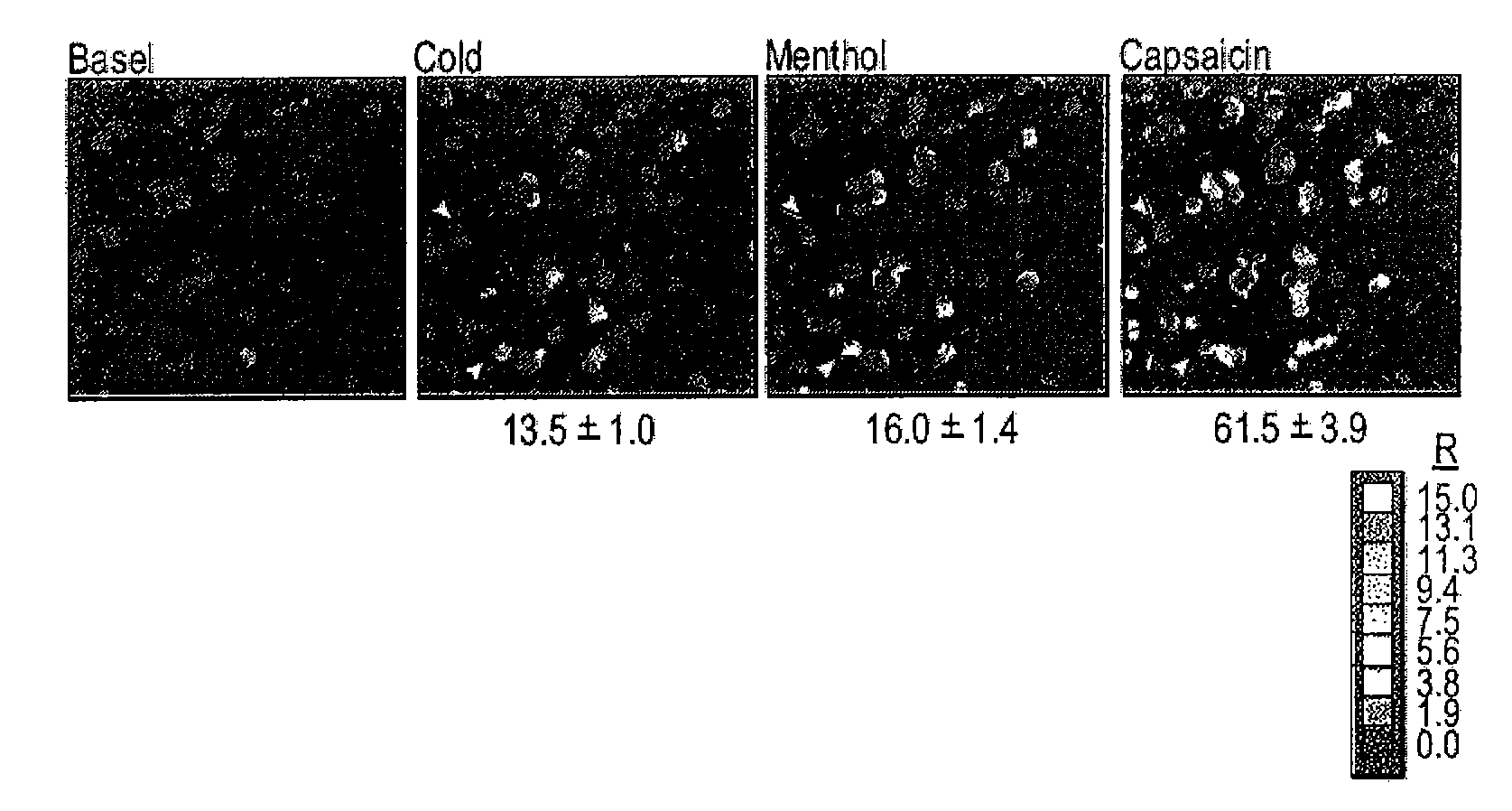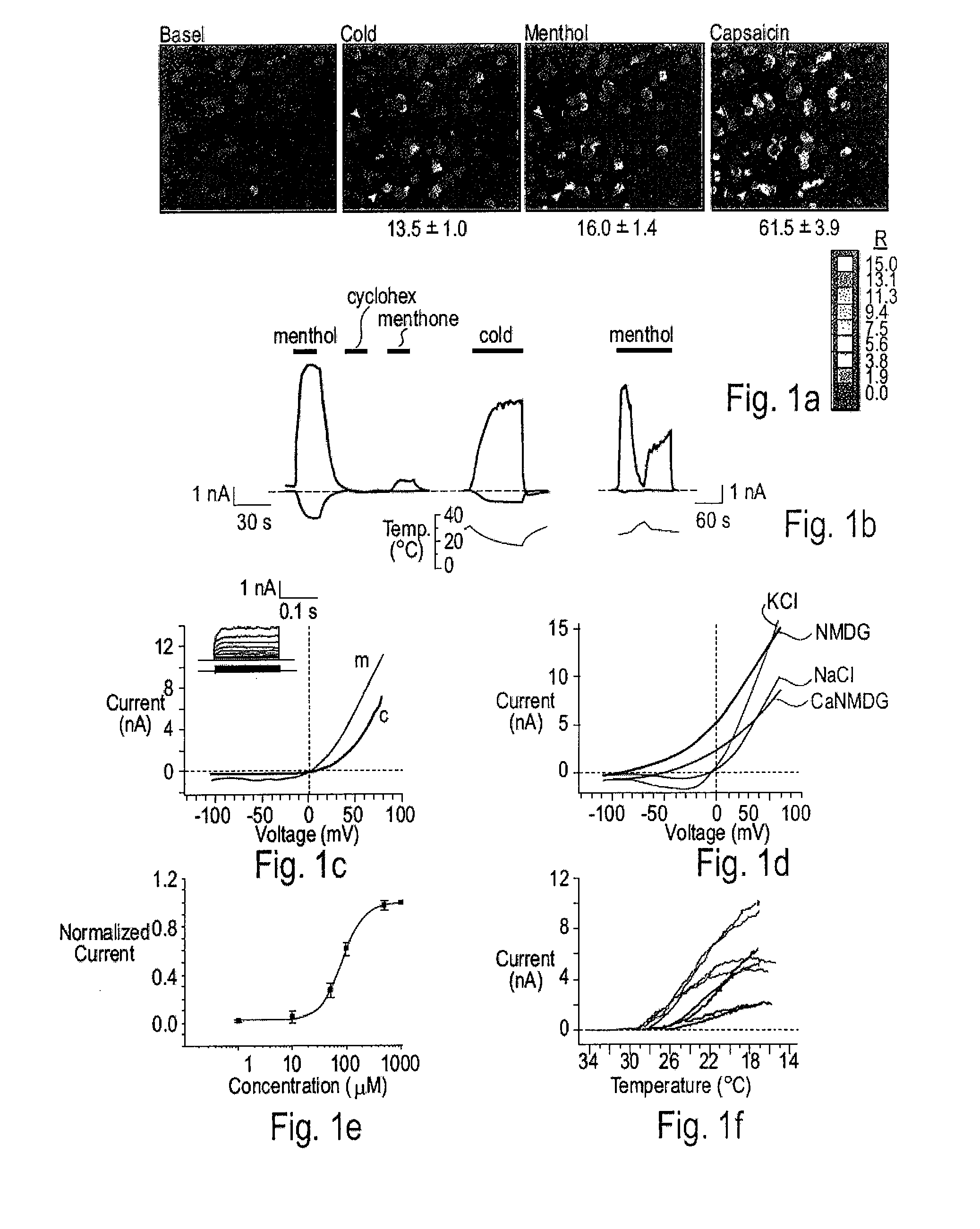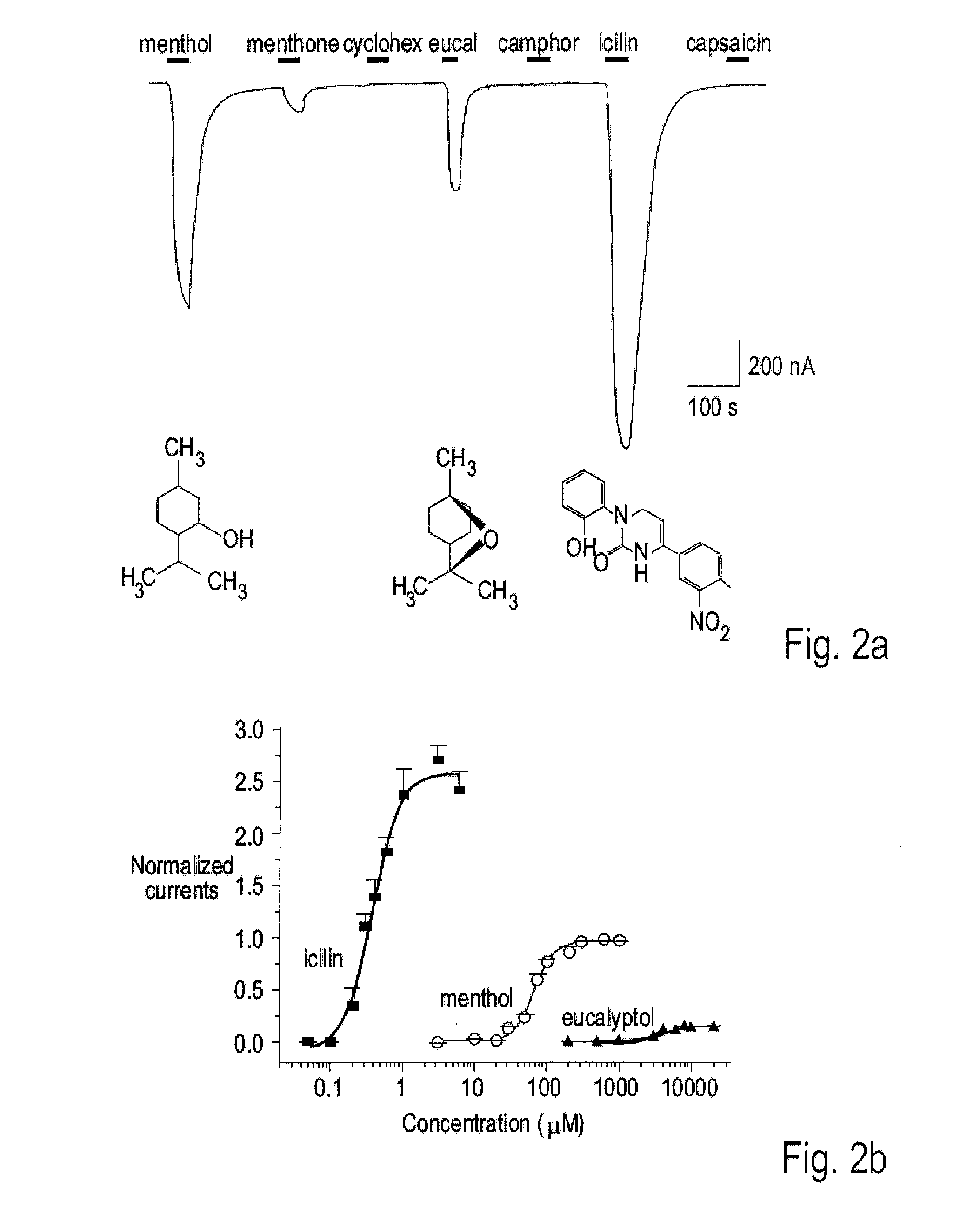Methods of modulating cold sensory perception
a technology of sensory perception and modulation, applied in the direction of instruments, peptides/protein ingredients, peptides, etc., can solve the problems of no unifying cellular mechanism proposed to explain the action of menthol, no direct pharmacological or biochemical evidence to support, and the fiber type that transduces the sensation of innocuous cool or noxious cold is not as firmly established. , to achieve the effect of modulating cold sensation or pain
- Summary
- Abstract
- Description
- Claims
- Application Information
AI Technical Summary
Problems solved by technology
Method used
Image
Examples
examples
[0209]The following examples are offered to illustrate, but not to limit the claimed invention.
Menthol and Cold Activate an Inwardly Rectifying, Ca2+-Permeable Channel on Trigeminal Sensory Neurons
[0210]Body surfaces that are innervated by trigeminal fibers, such as the eye and tongue, are particularly sensitive to cold and cooling compounds (e.g., Eccles, J. Pharm. Pharmacol. 46: 618-30 (1994)). Calcium imaging and electrophysiological methods were therefore used to examine responses of dissociated rat trigeminal neurons to menthol and cold. Indeed, these stimuli produced robust increases in intracellular free-calcium in a relatively small sub-population of trigeminal neurons (FIG. 1a), consistent with work from others using DRG cultures (see, e.g., Reid & Flonta, Nature 413:480 (2001); Suto & Gotoh, Neuroscience 92:1131-5 (1999); Okazawa et al., Neuroreport 11:2151-5 (2000)). Menthol and cold excited a largely overlapping subset of neurons, a significant fraction of which (54.5±6....
PUM
| Property | Measurement | Unit |
|---|---|---|
| temperatures | aaaaa | aaaaa |
| temperatures | aaaaa | aaaaa |
| temperature | aaaaa | aaaaa |
Abstract
Description
Claims
Application Information
 Login to View More
Login to View More - R&D
- Intellectual Property
- Life Sciences
- Materials
- Tech Scout
- Unparalleled Data Quality
- Higher Quality Content
- 60% Fewer Hallucinations
Browse by: Latest US Patents, China's latest patents, Technical Efficacy Thesaurus, Application Domain, Technology Topic, Popular Technical Reports.
© 2025 PatSnap. All rights reserved.Legal|Privacy policy|Modern Slavery Act Transparency Statement|Sitemap|About US| Contact US: help@patsnap.com



